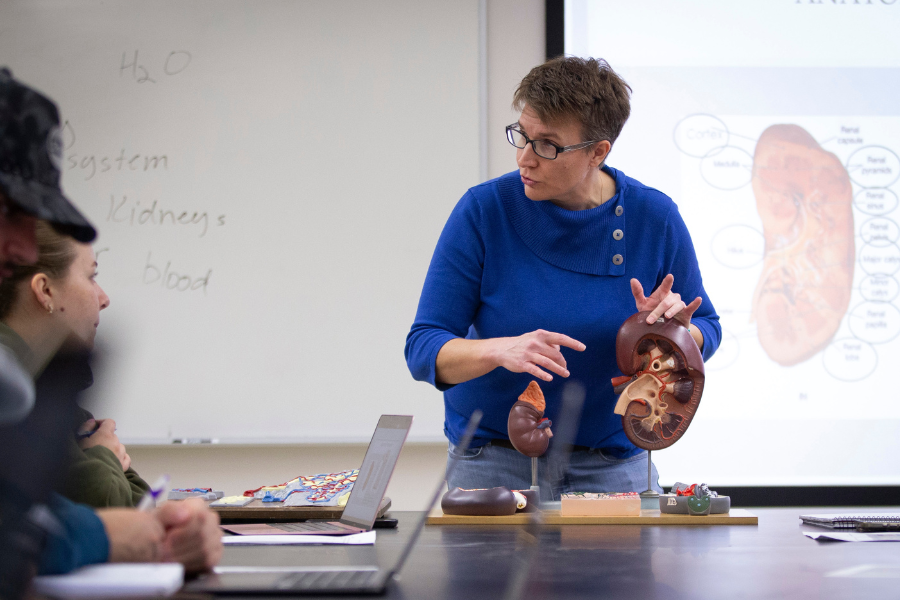Six Essentials for Leading Special Education – NAESP

Report on Leadership Essentials for Special Education and Alignment with Sustainable Development Goals
Effective leadership in special education is critical for implementing the Individuals with Disabilities Education Act (IDEA) and advancing global commitments to inclusive and equitable education. This report outlines six essential leadership practices and analyzes their contribution to achieving the United Nations Sustainable Development Goals (SDGs), particularly SDG 4 (Quality Education), SDG 10 (Reduced Inequalities), SDG 16 (Peace, Justice, and Strong Institutions), and SDG 17 (Partnerships for the Goals).
The Six IDEA Leadership Essentials
- Professional, Legal, and Ethical Practices
- Educator and Provider Supports
- Instruction and Intervention Leadership
- Vision and Strategic Leadership
- Institutional Leadership: Operations, Systems, and Resources
- Family and Community Engagement
Analysis of Leadership Practices and SDG Contributions
Professional, Legal, and Ethical Practices
This practice focuses on making ethically and legally sound decisions to increase access and belonging for students with disabilities, directly supporting SDG 16 by promoting just and accountable institutions. It also reinforces SDG 10 by ensuring legal frameworks reduce inequalities for vulnerable populations.
- Challenge: School administrators often report insufficient training in IDEA regulations, leading to an overreliance on specialized staff and potential compliance risks.
- Strategic Response: Leaders must engage in continuous legal training and collaborate with experienced staff. This commitment to legal and ethical standards is foundational to building strong institutions (SDG 16) that protect the rights of all students.
Educator and Provider Supports
Building a capable and committed workforce is essential for delivering high-quality education, a core tenet of SDG 4. This practice directly addresses SDG Target 4.c, which calls for an increased supply of qualified teachers.
- Challenge: Staff shortages, high turnover rates, and budget constraints create instability and can compromise instructional quality for students with disabilities.
- Strategic Response: School leaders must prioritize robust professional development, mentorship programs, and collaborative structures like co-teaching models. These initiatives build educator capacity, ensuring that all students receive a quality education from well-supported professionals.
Instruction and Intervention Leadership
Monitoring and improving service delivery for children with disabilities is a direct action toward achieving SDG 4, which emphasizes inclusive and effective learning environments for all (Target 4.a).
- Challenge: A rise in aggressive behaviors and a lack of self-regulation among students, coupled with insufficient administrator training in evidence-based instructional strategies, can lead to inconsistent support.
- Strategic Response: Implementing multi-tiered systems of support (MTSS) and providing “push-in” services ensures students receive necessary interventions within inclusive classroom settings, preventing segregation and promoting an equitable learning environment.
Vision and Strategic Leadership
Setting a clear, inclusive vision is fundamental to dismantling systemic barriers and advancing SDG 10 (Reduced Inequalities). A leader’s vision can reshape institutional culture to promote the social inclusion of all individuals (Target 10.2).
- Challenge: Resistance to inclusive practices often stems from entrenched mindsets and perceived resource limitations.
- Strategic Response: Leaders must articulate and consistently model a vision of inclusion. By empowering early adopters and demonstrating success, they can drive school-wide change and foster a culture that actively reduces inequality.
Institutional Leadership: Operations, Systems, and Resources
Aligning institutional operations and systems to support inclusion is a key component of building effective and accountable institutions, as outlined in SDG 16. This involves ensuring decision-making is inclusive and participatory (Target 16.7).
- Challenge: Special education staff are frequently excluded from leadership teams and key decision-making processes, which undermines systemic inclusion efforts.
- Strategic Response: Leaders must guarantee that special educators are integrated into leadership teams, professional learning communities, and strategic planning. This ensures that the institution’s operations and resource allocation are designed to support every student.
Family and Community Engagement
Engaging in authentic partnerships with families and the community is a powerful strategy for achieving goals through collaboration, reflecting the principles of SDG 17 (Partnerships for the Goals).
- Challenge: Sustaining meaningful engagement can be difficult, particularly in under-resourced communities. Educators and administrators can also feel isolated in their roles.
- Strategic Response: Leaders must proactively build and maintain partnerships with families, ensuring their voices are central to the educational process. Fostering professional networks for peer support further strengthens the ecosystem required to achieve shared goals for student success.
Analysis of Sustainable Development Goals in the Article
1. Which SDGs are addressed or connected to the issues highlighted in the article?
-
SDG 4: Quality Education
- The entire article is centered on improving the quality of education for students with disabilities. It discusses challenges and strategies related to instructional leadership, teacher training, and creating inclusive learning environments to ensure all students can thrive.
-
SDG 10: Reduced Inequalities
- The article directly addresses the need to reduce inequalities faced by students with disabilities. It focuses on implementing the Individuals with Disabilities Education Act (IDEA) to ensure these students have equal access, belonging, and opportunity within the educational system.
-
SDG 8: Decent Work and Economic Growth
- The article touches upon the working conditions and professional capacity of educators. It highlights issues like staff shortages, high turnover, and the need for better support and professional development for special education teachers, which relates to the goal of achieving decent work for all.
-
SDG 16: Peace, Justice and Strong Institutions
- The article emphasizes the importance of strong institutional leadership and governance within schools. It discusses the need for principals to understand legal frameworks like IDEA, make ethical decisions, and build inclusive, participatory systems where special educators are part of decision-making processes.
2. What specific targets under those SDGs can be identified based on the article’s content?
-
Under SDG 4 (Quality Education):
- Target 4.5: “By 2030, eliminate gender disparities in education and ensure equal access to all levels of education and vocational training for the vulnerable, including persons with disabilities…” The article’s core theme is the effective implementation of IDEA to provide students with disabilities access to quality education.
- Target 4.a: “Build and upgrade education facilities that are child, disability and gender sensitive and provide safe, non-violent, inclusive and effective learning environments for all.” The article advocates for creating inclusive settings through strategies like “push-in services” and co-teaching models to ensure students with disabilities learn in an environment that “makes sense.”
- Target 4.c: “By 2030, substantially increase the supply of qualified teachers…” The article highlights the challenge of “staff shortages and high turnover in special education” and the problem of hiring “teachers with provisional licenses and minimal preparation,” directly linking to the need for a more qualified and stable teaching workforce.
-
Under SDG 10 (Reduced Inequalities):
- Target 10.2: “By 2030, empower and promote the social, economic and political inclusion of all, irrespective of… disability…” The article stresses the importance of moving beyond physical placement to true inclusion, where students feel a sense of belonging and are supported within general education classrooms.
- Target 10.3: “Ensure equal opportunity and reduce inequalities of outcome, including by eliminating discriminatory… practices and promoting appropriate legislation…” The focus on the legal and ethical implementation of IDEA is a direct effort to ensure equal opportunity and uphold the rights of students with disabilities in education.
-
Under SDG 8 (Decent Work and Economic Growth):
- Target 8.5: “…achieve full and productive employment and decent work for all…” While not about the students’ future employment, this target is relevant to the educators discussed. The article’s focus on “Educator/Provider Supports” to combat high turnover and staff shortages speaks to the need to create decent working conditions and professional support for special education staff.
-
Under SDG 16 (Peace, Justice and Strong Institutions):
- Target 16.7: “Ensure responsive, inclusive, participatory and representative decision-making at all levels.” The article points out that “special educators are often excluded from leadership teams and decision-making” and advocates for their inclusion to build stronger, more effective school systems.
3. Are there any indicators mentioned or implied in the article that can be used to measure progress towards the identified targets?
-
For SDG 4 (Quality Education):
- Percentage of qualified special education teachers: The article implies this is a key metric by stating that many schools “hire teachers with provisional licenses and minimal preparation.” An increase in fully licensed teachers would indicate progress.
- Adoption of inclusive instructional models: Progress can be measured by the number of schools implementing co-teaching models and “push-in services” as opposed to pulling students out of classrooms.
- Participation in professional development: The rate at which school leaders and teachers engage in “ongoing legal training” and other professional development opportunities is an indicator of improved capacity.
-
For SDG 10 (Reduced Inequalities):
- Rate of students receiving services in inclusive settings: The shift from “pulling those kids out of the classroom” to providing support within the general classroom is a direct measure of inclusion and reduced inequality of opportunity.
-
For SDG 8 (Decent Work and Economic Growth):
- Staff turnover and shortage rates: The article explicitly mentions “staff shortages and high turnover” as major challenges. A reduction in these rates would indicate improved working conditions and support for educators.
-
For SDG 16 (Peace, Justice and Strong Institutions):
- Representation of special education staff in leadership: An indicator of progress is whether special education staff are included on the “leadership team” and in “collaborative learning teams or professional learning communities,” as suggested in the article.
4. Table of SDGs, Targets, and Indicators
| SDGs | Targets | Indicators |
|---|---|---|
| SDG 4: Quality Education |
|
|
| SDG 10: Reduced Inequalities |
|
|
| SDG 8: Decent Work and Economic Growth |
|
|
| SDG 16: Peace, Justice and Strong Institutions |
|
|
Source: naesp.org
What is Your Reaction?
 Like
0
Like
0
 Dislike
0
Dislike
0
 Love
0
Love
0
 Funny
0
Funny
0
 Angry
0
Angry
0
 Sad
0
Sad
0
 Wow
0
Wow
0




















































.jpg.webp?itok=0ZsAnae9#)



























